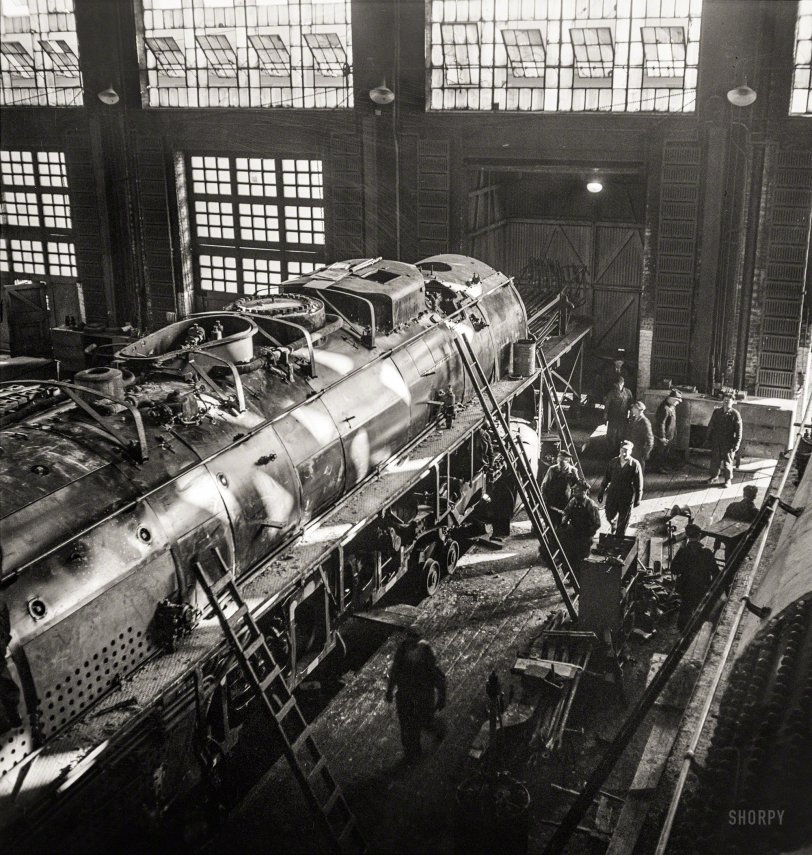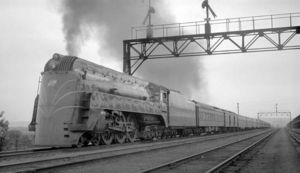


Framed or unframed, desk size to sofa size, printed by us in Arizona and Alabama since 2007. Explore now.
Shorpy is funded by you. Patreon contributors get an ad-free experience.
Learn more.

- Details, Details
- What's that building to the left of the tower?
- Coal Barges
- Bromo-Seltzer
- Inner harbor
- The Basin
- What a headache!
- Giant stepladder?
- Baldwin 62303
- Baldwin VO-1000
- Cold
- No expense spared
- Tough Guys
- Lost in Toyland
- And without gloves
- If I were a blindfolded time traveler
- Smoke Consumer Also Cooks
- Oh that stove!
- Possibly still there?
- What?!?
- $100 Reward
- Freeze Frame
- Texas Flyer wanted
- Just a Year Too Soon
- WWII -- Replacing men with women at the railroad crossing.
- Yes, Icing
- You kids drive me nuts!
- NOT An Easy Job
- I wonder
- Just add window boxes
Print Emporium
Fire-Eater: 1942

December 1942. Chicago, Illinois. "Working on a giant locomotive, one of the '400s,' in the Chicago & North Western Railroad shops." Medium-format negative by Jack Delano for the Office of War Information. View full size.
Another beauty.
Truly, Jack Delano was the Ansel Adams of Railroad photography.
Extended Stall
They have some kind of door extension on this stall to give them more room to pull out the superheater tubes in the front. I guess this is a LONG locomotive!
Built for but not used for the 400.
I believe the 4000 series C&NW 4-6-4s were not used in "400" service and instead ran mainly on the Chicago-Council Bluffs name trains--mostly on the lesser trains. Late in life they pulled commuter trains around Chicago. They were bucking progress--- namely the diesel electric. The 2900 series 4-6-2s ran the 400 until diesels bumped them in the late 30s. A 2900 is pictured in Vonderbees color postcard view. The 4000 series 4-6-4s were the most powerful 4-6-4s ever constructed. The popular New York Central 4-6-4s couldn't match them. The 4000s were scrapped in the mid 1950s except for one used for steam generator service at Escanaba and that one lasted until the mid-60s.
#4000's built for "The 400":
This is one of the E-4 class 4-6-4 Hudson locomotives C&NW ordered for their crack "400" passenger train numbered 4000-4009. Chicago to the Twin Cities: The "400", 400 miles in 400 minutes. Not bad with 8 stops along the way. Obviously undergoing heavy repairs. You can also clearly see the streamlined shroud supports along the top of the boiler, the streamlining having been removed for service. These were beautiful engines, it is too bad they were all cut up for scrap.

The 400 In Action
Here's a postcard view of it.

























On Shorpy:
Today’s Top 5